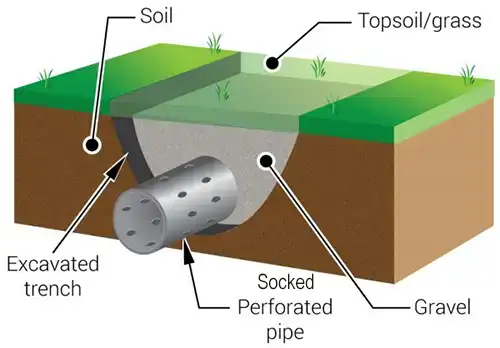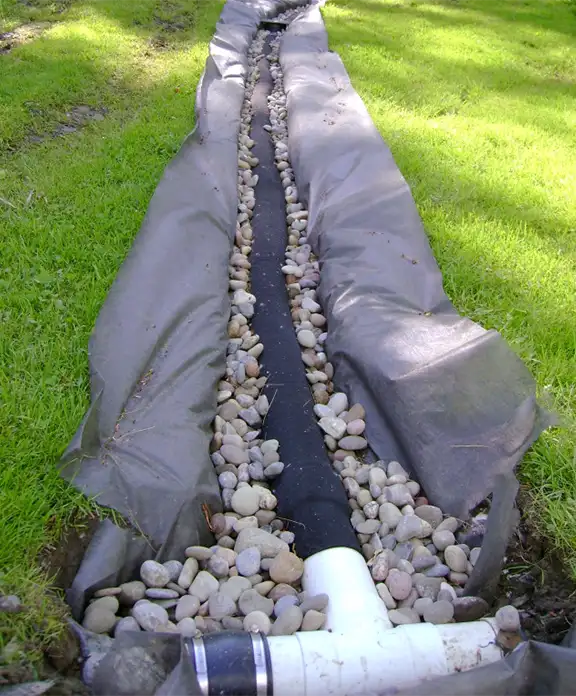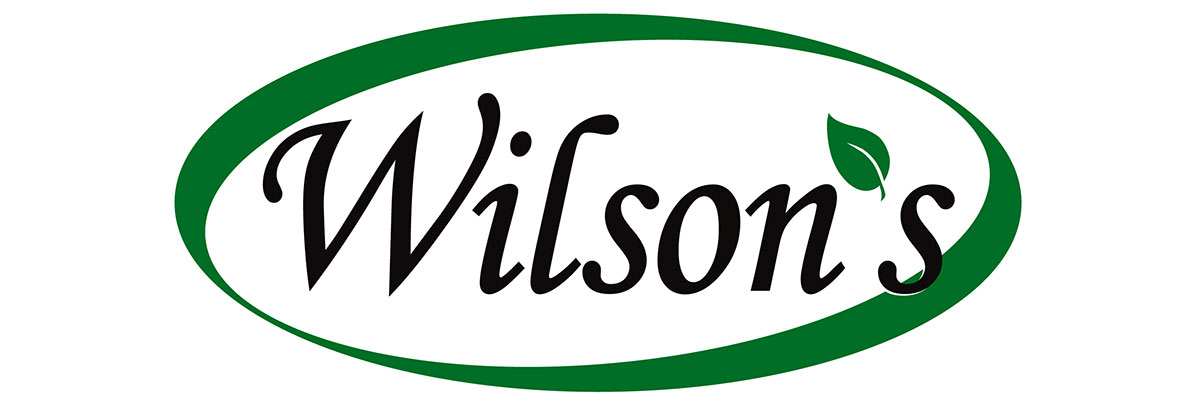A French drain is an effective system for managing excess water and preserving a healthy landscape. Named after American agriculturalist, Henry Flagg French, it’s designed using gravity to direct water flow away from property, preventing water damage and soil erosion. The cost ranges from $10 to $100 per linear foot, and while it requires regular upkeep to remain efficient, its benefits to property value and structural integrity are immense.
Key Takeaways
– French drains utilize gravity and a simple design to efficiently remove water and protect property from water damage.
– Installation involves trench excavation, placement of a perforated pipe, and backfilling with gravel and soil.
– They enhance landscape health, preserve property’s structural integrity, and increase property value.
– If not installed correctly, they can increase waterlogging risks and face clogging issues from silt, dirt, or roots over time.
Understanding the French Drain
Understanding the French Drain begins with grasping its basic structure and purpose.
It’s a drainage system that uses gravity and a simple design to remove excess water from specific areas.
This system not only protects your property from potential water damage but also contributes to the overall health of your landscape.
How Much Does a French Drain Cost?
If you’re contemplating installing a French drain, it’s crucial to understand the costs involved, which can vary widely depending on the complexity and length of the system. French drains serve as effective drainage solutions and waterproofing options, offering significant landscaping benefits. They’re an efficient method for water management, providing foundation protection and preventing water damage. The average starting cost to install a French Drain is $2,500.
**Material and Installation Costs:** French drains typically cost between $10 to $100 per linear foot, depending on whether you’re installing an exterior or interior drain.
**Additional Costs:** These may include grading, landscaping, and any necessary permits. Always consider these potential costs when planning your French drain installation.
Importance of Proper Drainage
Proper drainage plays a pivotal role in preserving the structural integrity of a property, preventing water-related damages like flooding, soil erosion, and mold growth. It’s essential in preventing flooding, particularly in low-lying areas and during heavy rainfall. With efficient water management, excessive moisture is quickly channeled away, reducing the likelihood of water pooling and stagnant areas that are breeding grounds for pests and diseases.
Improving landscaping is another benefit of proper drainage systems. They prevent soil erosion, preserving the aesthetics and health of your garden. Plants thrive better with ideal moisture control, as too much water can lead to root rot and other plant diseases.
Proper drainage also increases the value of a property. Homes with efficient drainage systems are more attractive to potential buyers, as they signify a well-maintained, flood-free property. This property value enhancement is a practical investment, offering peace of mind to homeowners and potential buyers alike.
French Drain Installation Process
Installing a French drain involves a series of precise steps, starting with the careful excavation of a trench in the targeted area. This process requires proper trenching techniques to guarantee the drain’s functionality. The trench must be deep and wide enough to house the pipe and gravel, ensuring efficient water redirection and preventing soil erosion.
After the trench is dug, the next critical step is the placement of a perforated pipe. This pipe, often PVC, will collect and carry away the water. It’s important to angle the pipe correctly, directing water flow away from the structure and towards a suitable drainage area.
Gravel placement is the next vital step. The pipe is encased in gravel, providing a porous medium through which water can easily flow. The gravel also helps to prevent soil from entering and clogging the pipe.
The final steps include:
* Back-filling the trench with more gravel until it’s level with the surface
* Covering the gravel with a layer of soil and grass to hide the drain and restore the landscape
* Testing the system to ensure effective water redirection
The proper installation of a French drain provides a robust drainage solution, protecting properties from water damage.
Advantages of French Drains
Beyond their practical functionality, French drains offer a host of advantages that safeguard both the structural integrity of your property and its aesthetic appeal. A primary advantage is efficient water management. By collecting and redirecting excess water, French drains prevent water pooling and oversaturation, reducing the risk of flooding.
Soil protection is another significant benefit. French drains help maintain a balanced soil moisture level, preventing both waterlogging and erosion. This protection guarantees the stability of your property’s foundation and promotes the health of your landscape.
Speaking of landscape, French drains also contribute to its enhancement. By managing water effectively, they ensure that your yard remains lush, verdant, and free from the blemishes of water damage. This not only preserves the beauty of your property but also potentially enhances its value.
When it comes to property preservation, French drains prove invaluable. By keeping your property dry and preventing potential water damage, they contribute to the longevity of your home’s structure.
Frequently Asked Questions
What Is the Lifespan of a Properly Installed French Drain System?
With proper drain maintenance, system upgrades, and quality material choices during installation, a well-installed drainage solution typically lasts between 20 to 30 years. Lifespan varies based on environmental factors and upkeep.
How Does Climate Affect the Functionality of a French Drain?
Climate impacts the drainage efficiency of any system. Rainfall impact and seasonal changes affect functionality. Different climate types present unique challenges. However, a well-designed system shows weather resistance, adapting to various climates while maintaining its role.
Can French Drains Be Installed in Clay Soil Conditions?
Yes, they can install French drains in clay soil conditions. However, it’s challenging due to the clay’s slow drainage. Proper material choices, installation techniques, and maintenance tips can overcome these clay soil challenges.
Do French Drains Attract Pests or Rodents?
No, French drains don’t attract pests or rodents. They’re designed for water flow, not habitation. Regular drain maintenance can deter pests. However, poor maintenance could invite problems, including infectious diseases and ecological impact.



